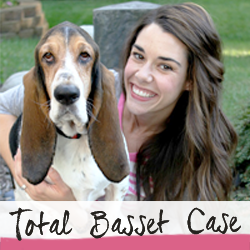I've found that the heartiest herbs to start out with are Basil, Oregano, Chives, Mint, Sage and Rosemary. Here's some info about each:
Basil is one of my favorite herbs to grow, hands down. It's extremely versatile as I use it in both sweet and savory dishes. Plus, it comes in a number of great varieties and frankly, I LOVE the taste of it! My favorite three to grow are Thai, Lettuce Leaf, and Genovese.
• Thai Basil has a pop of anise flavor to it and works well with any Asian dish, especially soups. Its leaves are slightly smaller but a little goes a long way.
• Lettuce Leaf Basil has a giant leaf which makes it great for pesto and other sauces because you don't have to use as much of the plant. It's also perfect for Caprese salads!
• Genovese Basil is probably the most common type of basil and has a subtle sweet taste. It can be used for just about anything so I always like to have it on hand.
Basil as a whole should be grown in full sun. It's pretty fast-growing and when it gets really warm (June/July) it has a tendency to bolt and go to seed. I generally don't mind when this happens because the basil buds are actually jam-packed with flavor so I just add them to any dish where I need the leaves. If you're planting them in a planter that is out in the open, I generally move them in during particularly windy or more violent thunderstorms.
Oregano is a great herb because it is extremely hardy. It has a woody stem so it can take just about everything. Make sure to plant oregano in full sun and prune regularly to keep it bushy. Plant this herb in its own container because it will take over anything in its path.
I'm less familiar with Rosemary and Sage but I do like to have them around. Sage goes really great when you're also using lemon in a meal and I've found that rosemary dries famously and can be used throughout the rest of the year. I love using sage in my Salt-crusted Fish recipe.
As far as where to buy herb plants, I like to look around a couple places. I generally like to stick to local greenhouses or farmer’s markets because I think they have a better grasp on quality control and know who and where their plants are coming from. Not to mention the benefits of supporting the local economy! That isn't to say that I don't drop by a box-shop garden center now and then, but it's good to have an idea of what a healthy plant looks like and compare both places.
Make sure to read the directions for each plant to know where to best position them as far as full sun, partial sun, or shade. As in any case with gardening, your state university's agricultural extension office is a fabulous place to go for online info because they have people researching this stuff everyday in your appropriate climate area. Here is a helpful guide from Purdue's extension office as to where to place your plants and lots of other tips.
Thanks again, Elise! And stay tuned next week when I reveal my herbs that I've been attempting to grow!
















1 comment:
I love herb gardening. And pronouncing the "h" in herb. Because that's how Martha does it and it makes me feel all cool like.
Post a Comment